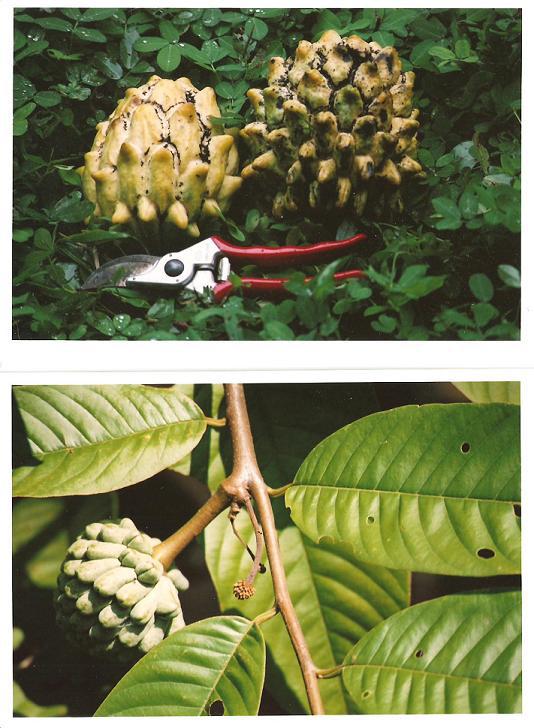Unripe Biriba fruit.
OVERVIEW
ORIGIN AND DISTRIBUTION
Biriba can be found growing in the wild in the islands of the Caribbean and in northern South America, now more commonly found in cultivation. It is most widely cultivated in the Brazilian state of Para.
Two small ripe fruit (photo above). Below, immature fruit on tree.
USES AND ETHNOBOTANY
The fruit is consumed raw. It’s sweet pulp has a very agreeable flavor; a somewhat mucilaginous, custard-like texture. Many Brazilians consider the Biriba to be the best tasting fruit of the Anonaceae family. I would consider that possibility myself. It is eaten fresh, out of hand, or in smoothies, sorbets and ice creams.
Reportedly, the seeds of Biriba can/are used for their insecticidal properties. Macerated seeds, soaked in water and strained, might hold potential for a good organic foliar insecticide and fungicide.
PROPAGATION AND CULTIVATION
Biriba is a medium size tree from the hot, humid tropics and grows best in areas with more than 1,250 mm of annual rainfall. The tree and fruit develop best in clay soils, deep, well drained and rich in organic matter.
The seedling Biriba tree begins to produce fruit around the third year of growth reaching maximum production in the eighth year. A single tree can produce around eighty fruits a year weighing between .4 and 1 kilo. Here in Panama it is one of the most productive fruit trees I have seen, however it is also very uncommon. Virtually unknown. I cannot recall when I have seen it in this area of Central America outside of private botanical collections.
When collecting seed for propagation, collect only the largest seeds from the largest fruits harvested from the most healthy and disease resistant trees.
Don’t eat seeds from Biriba or any other Anonaceous seeds, they may poison and possibly kill you.


